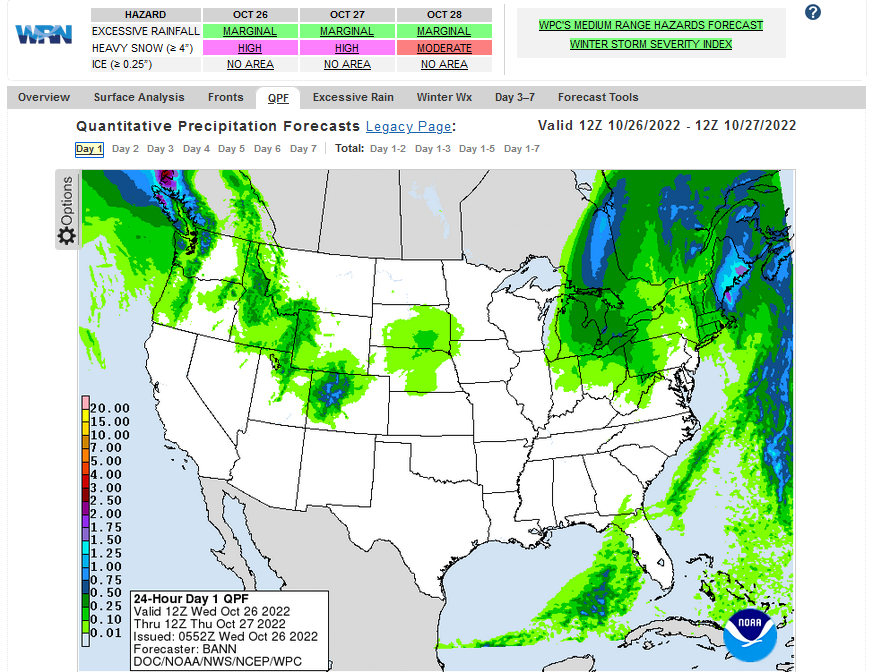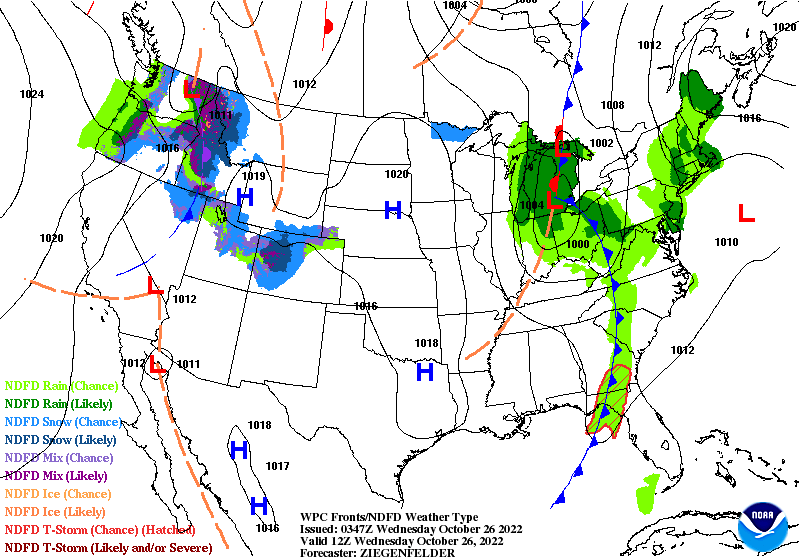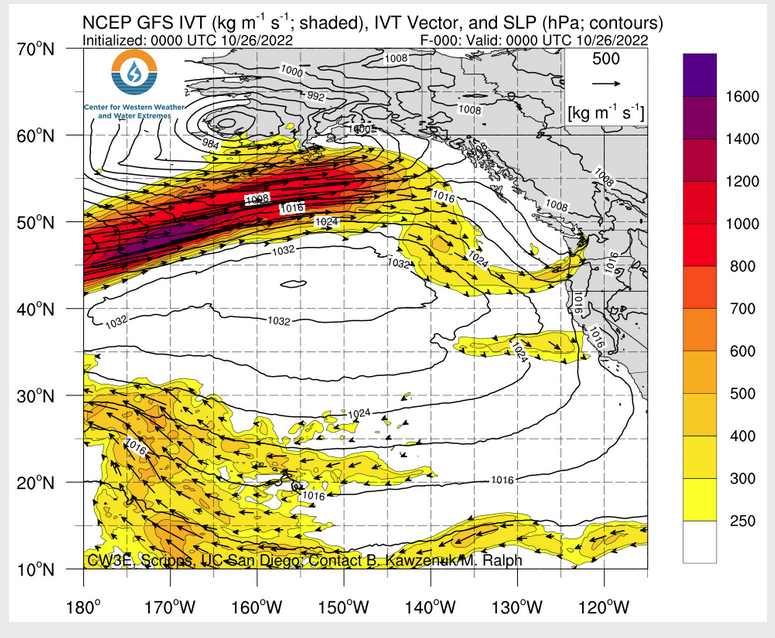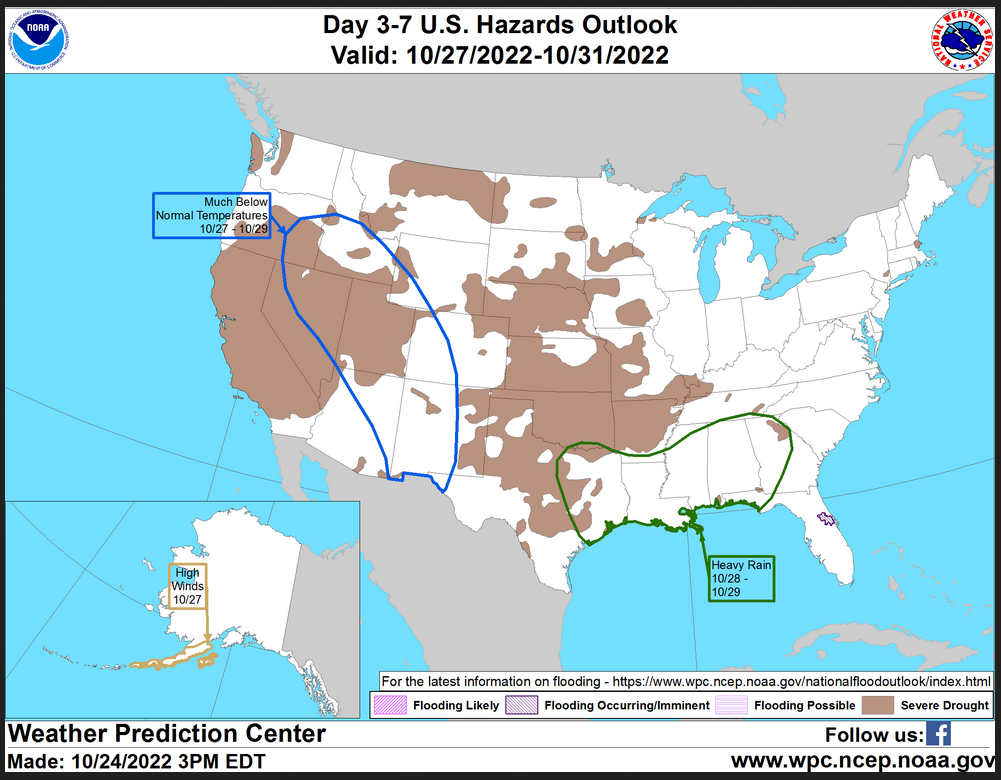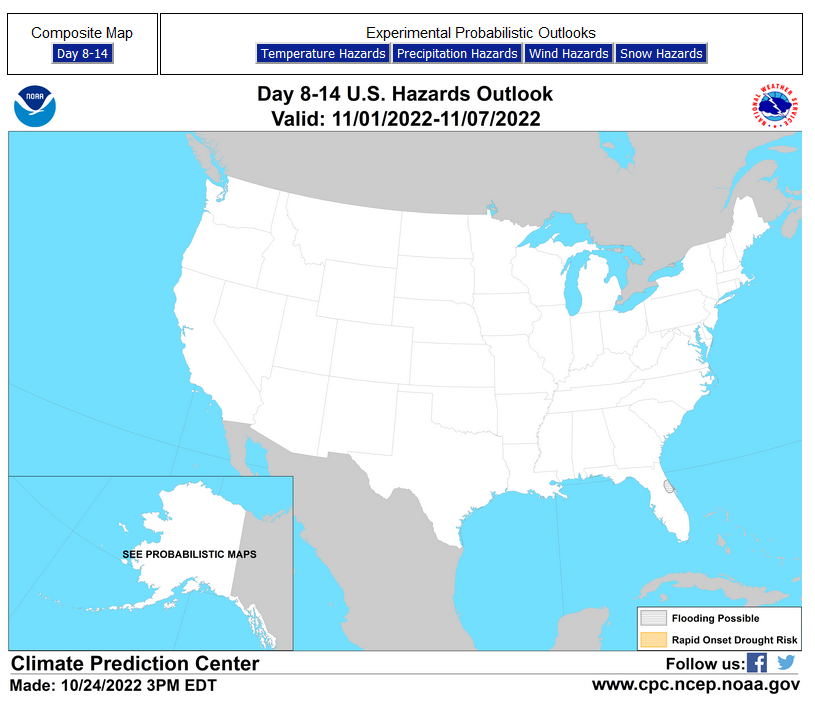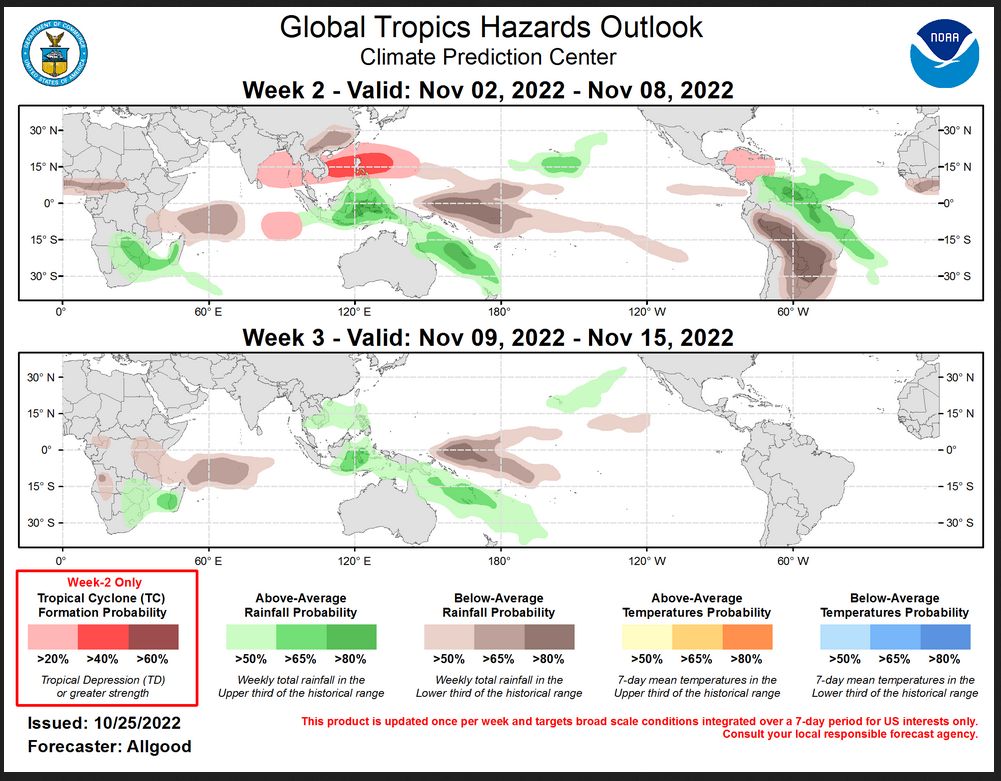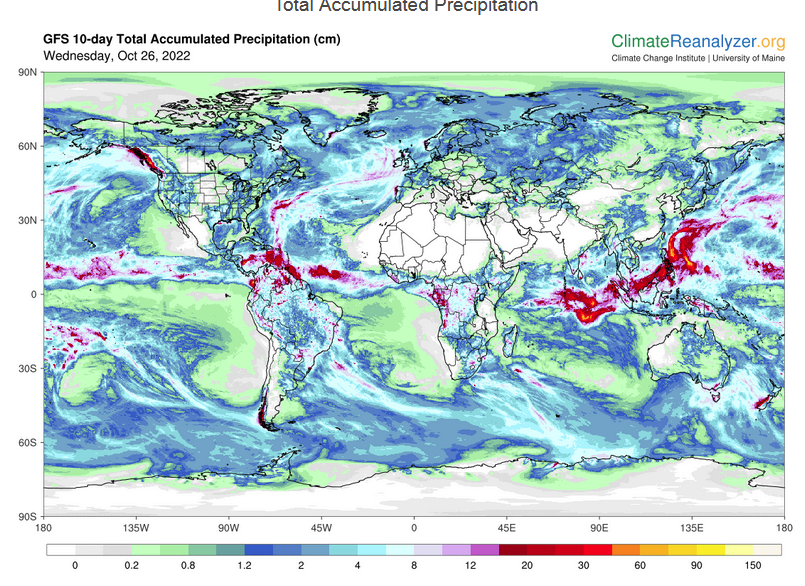Here is what we are paying attention to this evening and the next 48 hours from this evening’s NWS Forecast.
...Heavy rain and strong to severe storms expected through Wednesday night ahead of eastern U.S. cold front, followed by improving weather...
Continuation of the NWS Short Range Forecast (It is updated twice a day and these updates can be found here.
A well defined upper level low will track across the Ohio Valley tonight and then become absorbed by the westerlies on Wednesday, with a trailing cold front crossing the eastern third of the nation and exiting the East Coast Wednesday night. The most impactful weather is expected to occur between now and early Wednesday. The Storm Prediction Center has a Slight Risk of severe thunderstorms through tonight across portions of the Deep South and Tennessee where the best combination of instability and dynamics will exist. The thunderstorm threat wanes considerably going into Wednesday and beyond as forcing for ascent decreases. In terms of heavy rain prospects, a corridor of moderate to heavy rainfall is forecast from Illinois to western Lower Michigan through Wednesday afternoon, with some 1-2 inch rainfall totals possible. Much of this will be beneficial rainfall for areas that have been quite dry recently, so this will tend to mitigate the potential for flooding. The weather pattern will be more uneventful across the remainder of the nation as a large surface high will reside across the Plains and result in sunny to partly cloudy skies for most areas west of the ongoing Eastern U.S. storm system. The exception to this will be across the Cascades and portions of the Northern/Central Rockies where a couple of mid-upper level impulses will generate some mountain snow showers, with several inches of accumulation possible for the higher terrain, mainly through Wednesday evening. In terms of temperatures, readings are expected to be generally above normal across the Eastern U.S., with the greatest anomalies across New England where temperatures could be 20 degrees above normal on Wednesday. Cooler than average readings will likely continue across most locations in the Western U.S. as the upper level trough remains over this region.
Current forecast of heavy precipitation (Updates can be found HERE)
Maps that relate the forecast to geography can be found by clicking Here for Day 1 and Here for Day 2.
Here is a 60-hour animated forecast map that shows how the short-term forecast is expected to play out
If it needs to be updated click here.
ATMOSPHERIC RIVERS
Click HERE to update. HERE is some useful information about Atmospheric Rivers.
HAZARDS OUTLOOKS
Click here for the latest complete Day 3 -7 Hazards forecast which updates only on weekdays. Once a week probably Monday or Tuesday I will update the images. I provided the link for readers to get daily updates on weekdays. Use your own judgment to decide if you need to update these images.
Worldwide Tropical Forecast
(This graphic updates on Tuesdays) If it has not been updated, you can get the update by clicking here This is a new approach and covers weeks 2 and 3 not weeks 1 and 2. It has more information but I am having trouble getting used to it. As usual, it comes with a discussion which is below
Detailed Maps and Reports for the Western Atlantic and the Pacific Oceans
Below are four maps that summarize the situation for the Atlantic, Eastern, Central Pacific, and Western Pacific. Additional information can be accessed by clicking HERE
First the Atlantic
Click to view the forecast map and have access to additional information https://www.nhc .noaa.gov/gtwo.php?basin= atlc&fdays=5
Then Eastern Pacific
Click to view the forecast map and have access to additional information https://www.nhc.noaa.gov/gtwo.php?basin=epac&fdays=5
Then Central Pacific
Click to view the forecast map and have access to additional information https://www.nhc.noaa.gov/gtwo.php?basin=cpac&fdays=5
And the Western Pacific
Click to view the forecast map and have access to additional information https://www.metoc.navy.mil/jtwc/jtwc.html
Some Intermediate-Term Outlooks
Links to “Outlook” maps and discussions for three time periods. Days 6 – 10, Days 8 – 14, and Weeks 3 and 4. An outlook differs from a forecast based on how NOAA uses these terms in that an “outlook” presents information from deviation from normal and the likelihood of these deviations.
You have to click on the links because they do not update automatically and I do not want to have stale images in the article. But it is not difficult to click on a link and you get a large image plus a discussion. On Fridays in a separate article, we will show the images and provide a link in this article that article. But remember what you will see is the images as of Friday. But here you can get the current images simply by clicking on them. Then hit the return arrow at the upper left of your screen to return to the article. You will not find this information easily anywhere else.
Right now you can find these maps here (We show them every Friday there but you can click above and find them).
Worldwide Weather
Below is the current or short-term precipitation forecast which can be updated by clicking HERE Additional maps can be obtained HER E.
Month to Date Information
Month to date Temperature can be found at https://hprcc.unl.edu/products/maps/acis/MonthTDeptUS.png
Month to date Precipitation can be found at https://hprcc.unl.edu/products/maps/acis/MonthPNormUS.png

